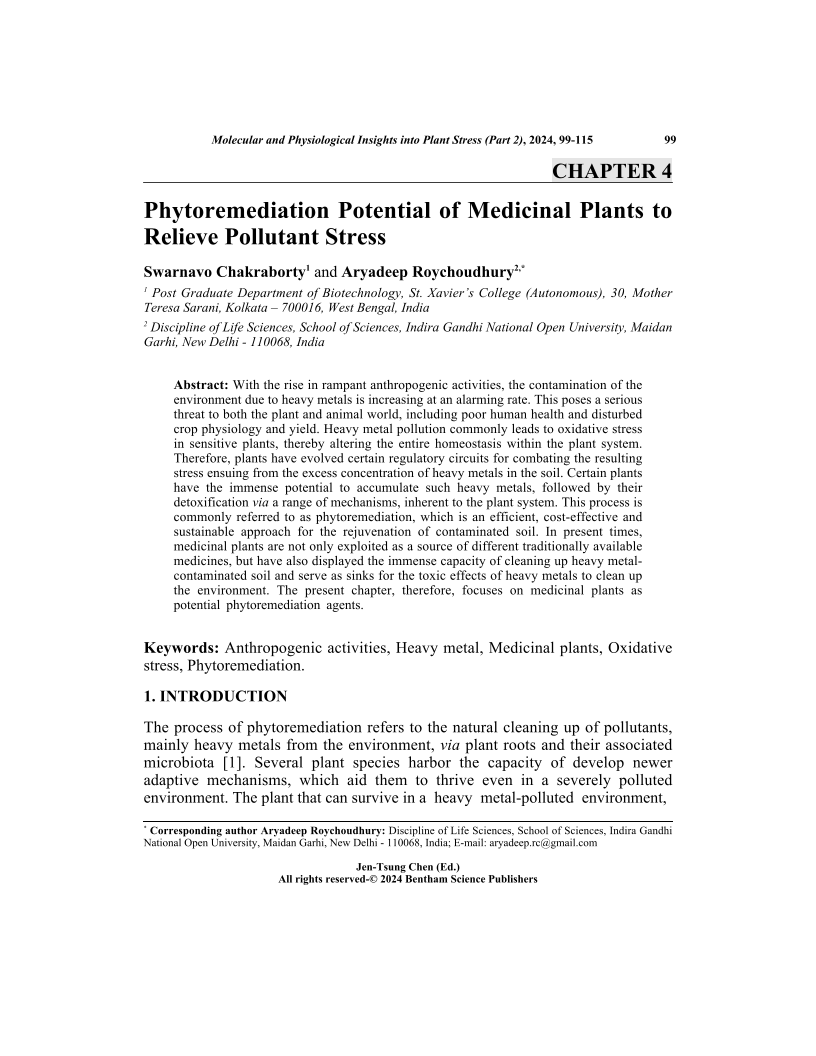Phytoremediation Potential of Medicinal Plants to Relieve Pollutant Stress

- Authors: Swarnavo Chakraborty1, Aryadeep Roychoudhury2
-
View Affiliations Hide Affiliations1 Post Graduate Department of Biotechnology, St. Xavier's College (Autonomous), 30, Mother Teresa Sarani, Kolkata 700016, West Bengal, India 2 Discipline of Life Sciences, School of Sciences, Indira Gandhi National Open University, Maidan Garhi, New Delhi 110068, India
- Source: Molecular and Physiological Insights into Plant Stress Tolerance and Applications in Agriculture- Part 2 , pp 99-115
- Publication Date: February 2024
- Language: English
Phytoremediation Potential of Medicinal Plants to Relieve Pollutant Stress, Page 1 of 1
< Previous page | Next page > /docserver/preview/fulltext/9789815179699/chapter-4-1.gif
With the rise in rampant anthropogenic activities, the contamination of the environment due to heavy metals is increasing at an alarming rate. This poses a serious threat to both the plant and animal world, including poor human health and disturbed crop physiology and yield. Heavy metal pollution commonly leads to oxidative stress in sensitive plants, thereby altering the entire homeostasis within the plant system. Therefore, plants have evolved certain regulatory circuits for combating the resulting stress ensuing from the excess concentration of heavy metals in the soil. Certain plants have the immense potential to accumulate such heavy metals, followed by their detoxification via a range of mechanisms, inherent to the plant system. This process is commonly referred to as phytoremediation, which is an efficient, cost-effective and sustainable approach for the rejuvenation of contaminated soil. In present times, medicinal plants are not only exploited as a source of different traditionally available medicines, but have also displayed the immense capacity of cleaning up heavy metalcontaminated soil and serve as sinks for the toxic effects of heavy metals to clean up the environment. The present chapter, therefore, focuses on medicinal plants as potential phytoremediation agents.
-
From This Site
/content/books/9789815179699.chapter-4dcterms_subject,pub_keyword-contentType:Journal -contentType:Figure -contentType:Table -contentType:SupplementaryData105

